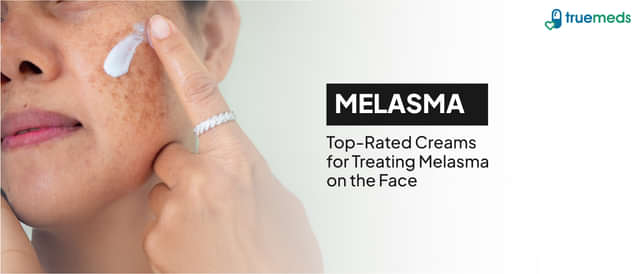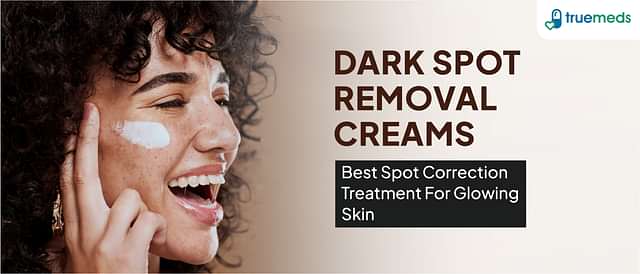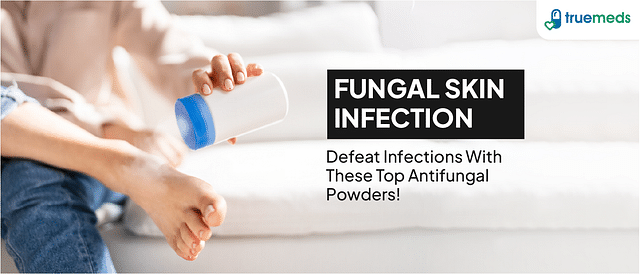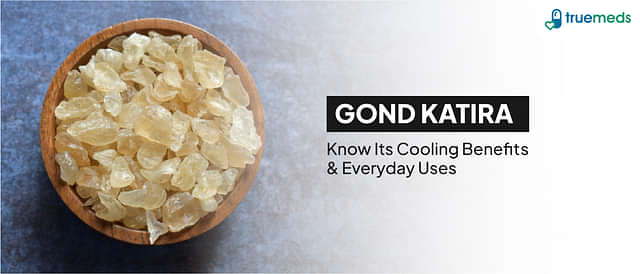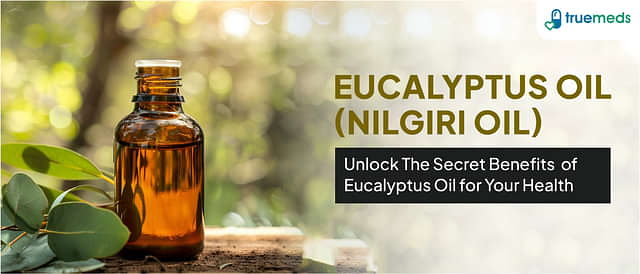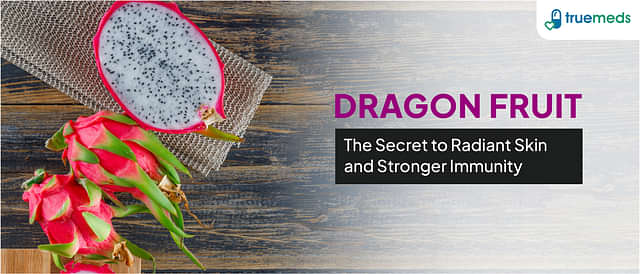Open Pore Types, Causes, Prevention & Treatment
Last updated on : 18 Mar, 2025
Read time : 11 min
As part of a healthy skin structure, open pores play an essential role in maintaining skin health. These small openings allow oil and sweat to come onto the skin’s surface, keeping it moisturised and protected. However, due to several factors, including genetics, lifestyle habits, and ageing, these open pores can become more noticeable.
Knowing the types, causes, and risks of open pores, along with prevention methods and diagnostic approaches, is crucial for achieving smoother, healthier-looking skin. This knowledge can guide you in taking the right steps to manage and minimise the appearance of open pores effectively.
What are Open Pores?
Open pores are tiny openings in the skin connected to sebaceous glands, which produce oil (sebum) and sweat. These pores play a crucial role in allowing these substances to reach the skin’s surface, helping to maintain moisture and regulate temperature. When pores become clogged with oil, dead skin cells, or dirt, they can appear more enlarged and prominent, leading many of us to seek out open pores treatment.
Let’s delve deeper to understand the different types of open pores, which play a key role in addressing specific skin concerns effectively.
Types of Acne Open Pores
Open pores may all look similar to the naked eye, but they can actually be classified into several distinct types based on their appearance and underlying causes.
- Stretched Pores: These are visibly enlarged pores, commonly found on the nose and cheeks. They often result from factors such as excessive oil production, ageing, or a loss of skin elasticity. Despite their size, stretched pores can empty properly when squeezed, indicating that they are not clogged.
- Congested Pores: These pores are filled with excess oil, dead skin cells, and sometimes dirt, making them appear raised and plugged. Congested pores are often found in individuals with oily and acne-prone skin. They can lead to the formation of blackheads and whiteheads if not properly managed.
- Scarred Pores: Severe acne can cause significant damage to the skin, resulting in scarred pores. These pores appear distorted and irregular due to the damage inflicted on the surrounding skin tissue. Scarred pores are a reminder of past skin issues and can be challenging to treat.
- Pitted Pores: Pitted pores are caused by the loss of collagen and tissue, often due to conditions like severe acne or chickenpox. These pores create small, deep indentations in the skin, giving it a pitted appearance.
- Patchy Pores: Patchy pores refer to areas of the skin with a higher concentration of visible pores compared to the surrounding areas, resulting in an uneven skin texture. This condition can be influenced by genetic factors, sun damage, or inconsistent skincare routines.
Read More – Anti-Ageing Skin Care Tips
Causes of Open Pores
Now that we know the types of open pores, let’s delve into what causes them. Several factors contribute to the appearance of open pores:
- Ageing: As we grow older, the levels of collagen and elastin in our skin decrease. This loss of structural support causes the skin to sag and the pores to stretch, making them more noticeable. Additionally, cell turnover slows down, leading to the accumulation of dead skin cells around the pores, which can make them appear larger.
- Sun Damage: Prolonged exposure to UV rays can harm the skin’s elasticity. The damage caused by the sun leads to the breakdown of collagen and elastin, contributing to enlarged pores. UV exposure can also thicken the skin, causing the edges of the pores to appear more pronounced.
- Skin Conditions: Conditions like acne and blackheads can lead to pore enlargement and congestion. The inflammation and blockages caused by these issues can stretch the pores over time. Furthermore, improper treatment or picking at acne can damage the pore structure, making them appear larger.
- Genetics: Believe it or not, pore size is largely determined by genetics. If you have a family history of oily skin, you are more likely to have larger pores. Genetic predisposition plays a significant role in how prominent your pores appear, affecting sebum production and skin texture.
- Excess Sebum Production: Oily skin can lead to enlarged pores due to the overproduction of sebum by the sebaceous glands. This excess oil can fill and expand the pores, making them more visible. Hormonal changes, particularly during puberty or pregnancy, can also increase sebum production and affect pore size.
Understanding these factors can help in the management and minimisation of the appearance of open pores through proper skin care and subsequent treatment options.
Read More – Homemade Face wash
Risk of Open Pores
Though open pores are not harmful in themselves, they can contribute to many skin issues. These include:
- Acne and Breakouts: Open pores can trap oil, dirt, and bacteria. This leads to clogged pores and subsequent formation of acne.
- Skin Texture Issues: Open pores can lend an uneven texture to your skin, making it appear less smooth and uneven.
- Potential for Scarring: Continuous acne associated with open pores can result in scarring which further affects the appearance of your skin and its texture.
Now that we know the risks associated with open pores, let’s look at how we can prevent them.
Prevention of Open Pores
To reduce the occurrence of open pores, you might want to consider the following preventive measures:
- Gentle Cleansing: Using a non-comedogenic cleanser maintains skin cleanliness and helps avoid clogging of pores.
- Sun Protection: Regularly applying a broad-spectrum sunscreen protects your skin from UV damage, which can reduce pore enlargement.
- Moisturisation: Even if you have oily skin, hydration is necessary. Use lightweight, oil-free moisturisers to maintain your skin’s balance.
- Avoid Harsh Products: Stay away from abrasive scrubs and harsh cleansers as these could irritate your skin and worsen pore visibility.
- Healthy Diet: Lastly, eating a balanced diet rich in vitamins and low in processed carbohydrates aids in maintaining skin health and preventing acne.
Tips for Minimising Open Pores!
By incorporating three key preventive measures into your daily routine, you can significantly enhance your skin texture while reducing pore visibility:
- Use a gentle, non-comedogenic cleanser twice a day.
- Protect your skin by using a broad-spectrum sunscreen with UVA and UVB protection every day, even on cloudy days.
- Never opt for harsh cleaners with ingredients like alcohol, sulphates, or synthetic fragrances that can strip your skin of its natural oils, leading to dryness and irritation.
Diagnosis of Open Pores
The diagnosis of open pores typically involves a visual assessment by a dermatologist. The key factors considered during this evaluation include:
- Pore Size: The size of the pores is assessed, especially in areas prone to enlargement like the nose and cheeks.
- Pore Density: The concentration of open pores in specific areas of the skin is evaluated to determine their severity.
- Skin Condition: The overall condition of the skin, including its oiliness, texture, and the presence of acne, is examined to understand the underlying causes.
Treatment of Open Pores
Open pores on your face can be a cause of concern. Thankfully, numerous treatments are available to help manage this skin condition. We can divide treatment into professional procedures and daily skincare routines.
Professional treatments:
- Laser Resurfacing: In this procedure, micro-injuries are created in the skin using lasers, which stimulates collagen production and tightens the skin, reducing the appearance of open pores. Typically, it requires 5-7 days of downtime post-treatment.
- Microneedling Radiofrequency (MNRF): This technique involves tiny needles puncturing the skin to deliver radiofrequency energy, promoting collagen and elastin production. Though it requires multiple sessions, there is no downtime, and it offers long-lasting results.
- Chemical Peels: These peels contain salicylic acid or glycolic acid that exfoliate the skin, control excess oil production and improve skin texture. You may need multiple sessions for optimal results.
- Microdermabrasion: A non-invasive procedure that exfoliates the top layer of skin, improving its texture and minimising the appearance of pores.
Here are the right products to prevent and minimise open pores?
- Cleansers: Sulphate-free cleansers work best for open pores to avoid irritation.
- Exfoliants: Incorporating chemical exfoliants like AHAs or BHAs into your skincare routine can help remove dead skin cells and prevent clogging.
- Topical Treatments: Products containing niacinamide, retinoids, or Vitamin C are highly beneficial for skin texture as they reduce pore visibility.
Medication for Open Pores
Medication can complement your open pores treatment plan by further helping to reduce their appearance. Here are the types of medications available for open pores:
- Topical Medications: Over-the-counter (OTC) products containing ingredients like salicylic acid, retinoids, or alpha hydroxy acids (AHAs) can help reduce the appearance of pores by promoting cell turnover and improving skin texture.
- Oral Medications: In some cases, dermatologists may prescribe oral retinoids or antiandrogens to tackle the underlying causes of enlarged pores, especially if they are linked to hormonal imbalances.
It’s important to note that before starting any medication, you should consult your family doctor or a dermatologist.
Prognosis of Open Pores
The prognosis for individuals with open pores varies based on several factors like skin type, underlying causes, and treatment adherence.
- Although open pores cannot be permanently closed, their appearance can be significantly minimised through proper skincare and professional treatments.
- Many individuals experience improved skin texture and reduced visibility of pores over time with consistent skin care.
- Regular medications and treatments may be necessary to sustain the visible results of skincare regimen, especially with ageing or high oil production.
Therefore, in managing open pores, consistency is key for effective long-term results.
Key Takeaways
In conclusion, open pores are a common skin concern influenced by ageing, genetics, and environmental pollutants. Managing them effectively involves regular skincare and a healthy lifestyle. Using gentle cleansers, protecting your skin from UV rays, and avoiding harsh ingredients can significantly minimise pore visibility. By incorporating these measures and using the right skincare products, you can achieve smoother, more vibrant skin.
Treating and managing open pores may seem like a daunting task, but with the right products at hand, you can confidently face this challenge head-on! You can opt for gentle cleansers like Acmed Facewash and Be Bodywise Cleanser. These are formulated for deep cleansing with ingredients like tea tree oil and salicylic acid which are beneficial for sensitive and acne-prone skin. Face toners and face masks such as Cetaphil Pro Dermacontrol Purifying Clay Face Mask, Mamaearth Green Tea Face Toner and Sebamed Clear Face Facial Toner can become an important part of your daily skincare regimen. They cleanse your skin deeply, removing any remaining dirt or makeup residue, and minimise the appearance of open pores.
In addition to using these products, remember to maintain a balanced diet, drink plenty of water and get enough sleep to support your skin’s health.
FAQs
Open pore treatment includes regular cleansing, toning, and moisturising. Using face masks and exfoliating scrubs can also effectively reduce open pores. Opt for products containing salicylic acid or retinol for effective results.
Open pores are a natural part of your skin, assisting in releasing oils and sweat. However, these pores can become a concern if they’re large and noticeable as they can accumulate dirt, leading to skin problems like acne and blackheads.
Yes, applying ice can temporarily shrink the size of your pores by constricting the blood vessels underneath the skin. This minimises the appearance of open pores by reducing inflammation and tightening the skin.
Indeed, hot water can open up the pores on your face, making it easier to to clean out dirt and impurities. However, excessive heat may lead to dryness.
Pores are present from birth, but their visibility typically increases during adolescence due to hormonal changes causing increased oil production
Yes, besan (gram flour) can help minimise the appearance of open pores. It works as a natural exfoliant, removing excess oil, dirt, and dead skin cells that clog pores. Using besan in face masks, combined with ingredients like curd or turmeric, can tighten and cleanse the skin, reducing pore visibility.
Yes, cold water can temporarily help tighten pores. It causes the skin to contract, making pores appear smaller. Rinsing your face with cold water or using ice cubes can also reduce puffiness and refresh the skin, but it doesn’t permanently shrink pore size.
Disclaimer
Our healthcare experts have carefully reviewed and compiled the information presented here to ensure accuracy and trustworthiness. It is important to note that this information serves as a general overview of the topic and is for informational purposes only. It is not intended to diagnose, prevent, or cure any health problem. This page does not establish a doctor-patient relationship, nor does it replace the advice or consultation of a registered medical practitioner. We recommend seeking guidance from your registered medical practitioner for any questions or concerns regarding your medical condition.
Popular Articles
Recommended Articles
Recent Articles
Top-Selling Medicines:
...View more
Top-Selling OTC:
...View more
Company
About UsHealth ArticleHealth StoriesDiseases & Health ConditionsAll MedicinesAll BrandsNeed HelpFAQSubscribe
Registered Office Address
Grievance Officer
Download Truemeds

Contact Us
Our customer representative team is available 7 days a week from 9 am - 9 pm.
v3.7.10
Our Payment Partners










